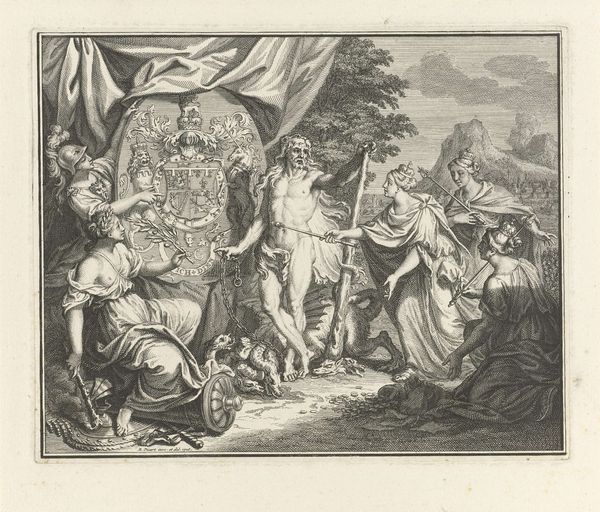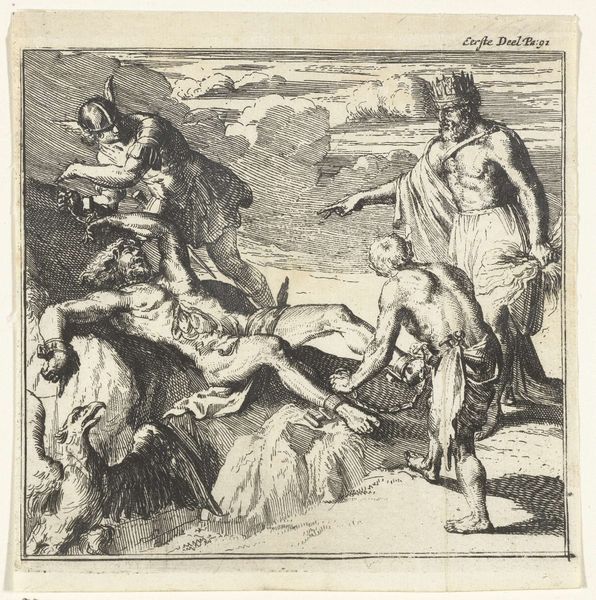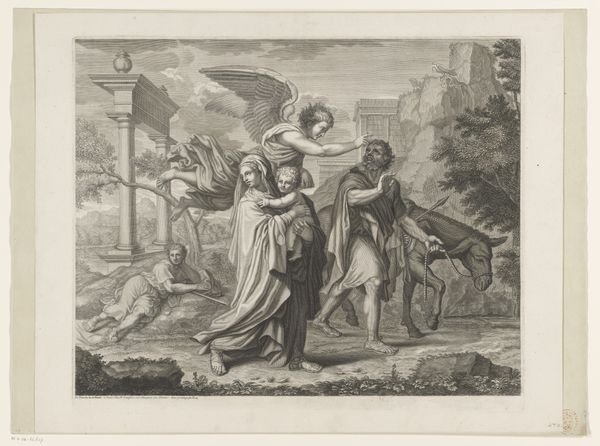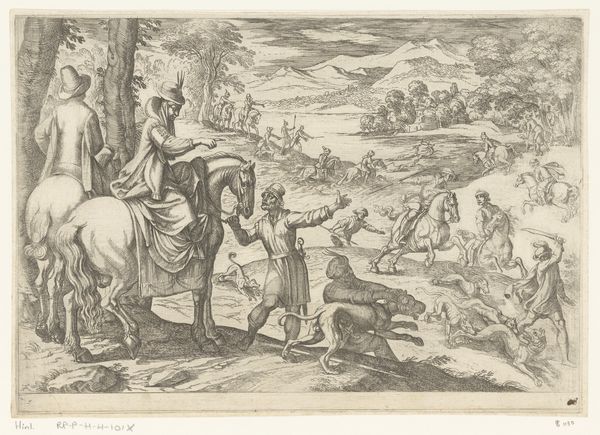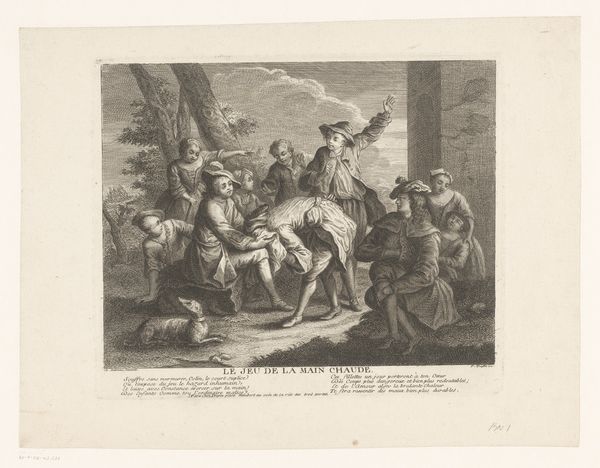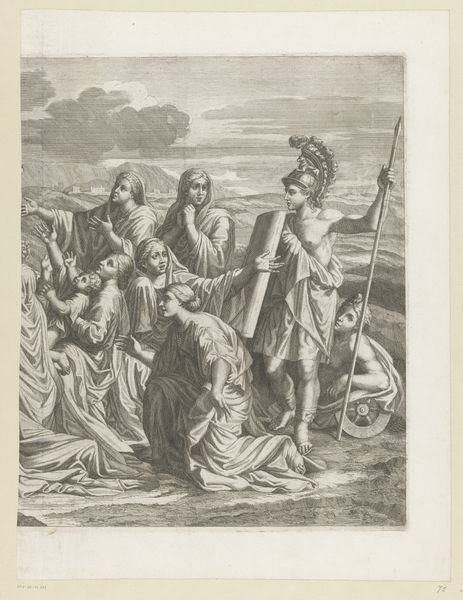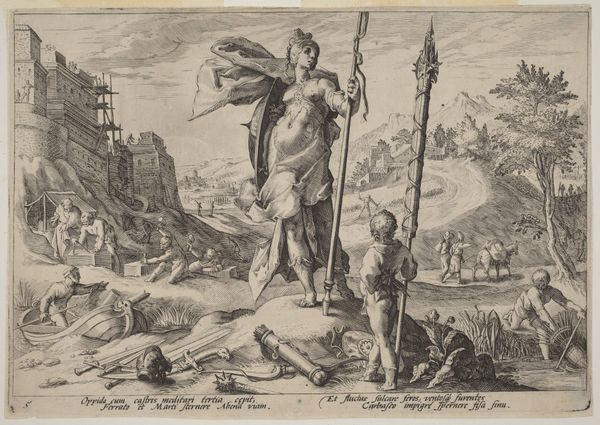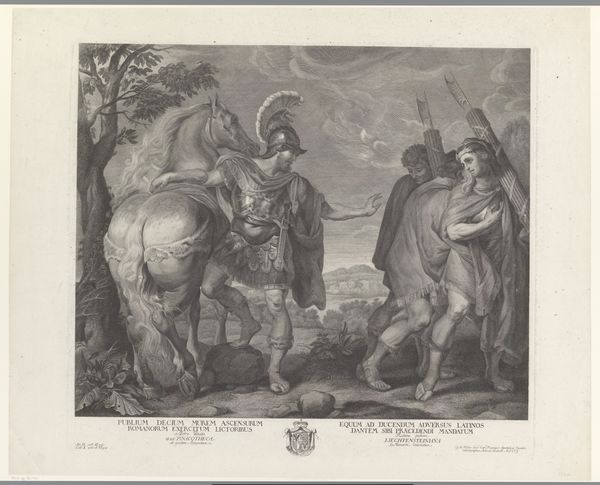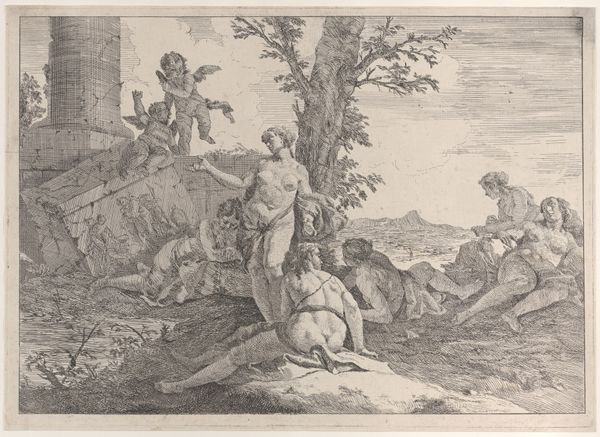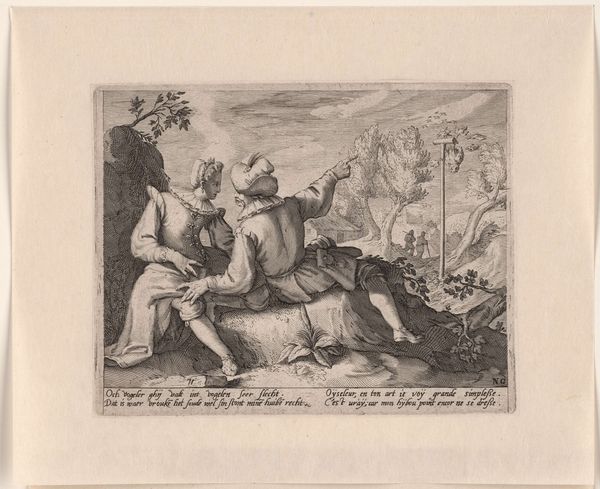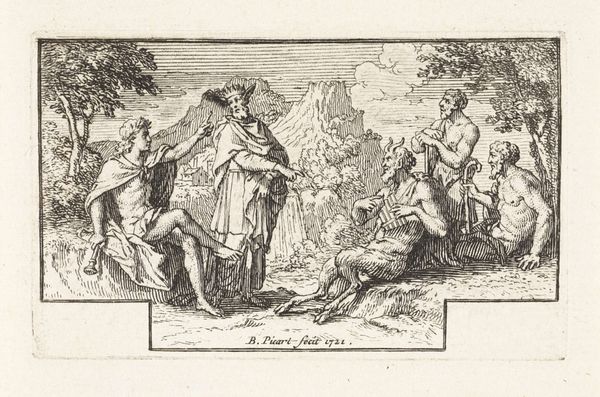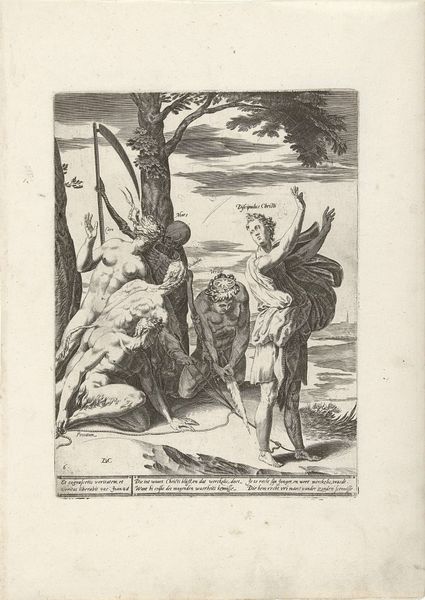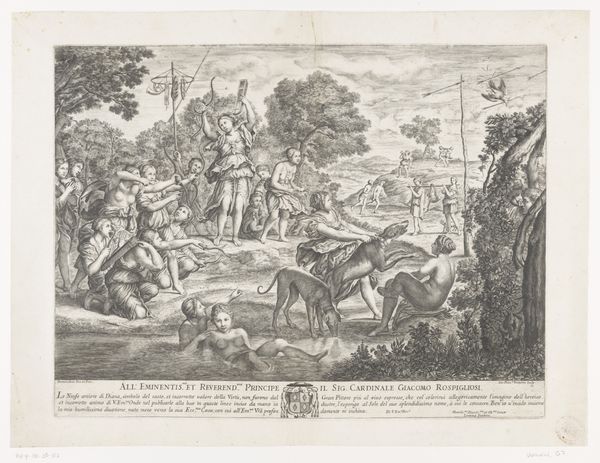
print, engraving
#
baroque
# print
#
old engraving style
#
landscape
#
figuration
#
history-painting
#
engraving
Dimensions: height 165 mm, width 225 mm
Copyright: Rijks Museum: Open Domain
Curator: Here we have Crispijn van de Passe the Younger's engraving, "Mercurius en Battus," dating back to sometime between 1630 and 1702. It’s part of the Rijksmuseum's collection, depicting a classical mythological scene. What strikes you first? Editor: There's an undeniable serenity despite the implied drama. It’s monochromatic of course, but it exudes a tranquil stillness that I find somewhat at odds with the figures and storyline present. Curator: Well, this reflects the pervasive influence of classical and biblical themes on artmaking in 17th-century Europe. It shows the moment Mercury, or Hermes, is about to punish Battus for betraying him. Van de Passe uses a familiar visual language meant to impart moral lessons. Editor: I see it—the divine versus the mortal, betrayal and punishment. The politics of imagery were pretty blatant back then, huh? I'm immediately thinking about who had the power to disseminate these narratives and how those stories were shaped by their biases. Who does the visual language exclude or negatively portray? Curator: Absolutely. But consider the engraving medium itself. Prints like this allowed for wider dissemination of visual culture, influencing not just elite but also, increasingly, middle-class understandings of history, morality, and mythology. Editor: That’s an interesting consideration. Dissemination is certainly something to think about given how much easier it is to proliferate media these days, especially in contexts that continue to exclude specific voices. Curator: Yes, it's about looking at how artists, then and now, navigate these tensions and deploy visual language to convey specific narratives within evolving social landscapes. And here, Van de Passe adopts a kind of didactic mode, instructing viewers about virtue and vice within a very recognizable, almost stage-managed setting. Editor: Exactly, this is an instructional artwork. While on the surface it imparts what some considered moral rectitude at that time, we must be equally aware that our definition of what constitutes 'moral' or 'just' is completely dependent on the evolution of our societal context. I think an image like this begs the question: Who decides which voices get amplified through art, and how does that shape public perception? Curator: Those are crucial questions. I find that in historical work such as this engraving, there’s always a reminder of just how much history shapes our present, whether or not we directly engage with it. Editor: I think, as always, engaging in conversations and critiques around imagery is vital work and these pieces really demonstrate just how important context can be in these analyses.
Comments
No comments
Be the first to comment and join the conversation on the ultimate creative platform.
